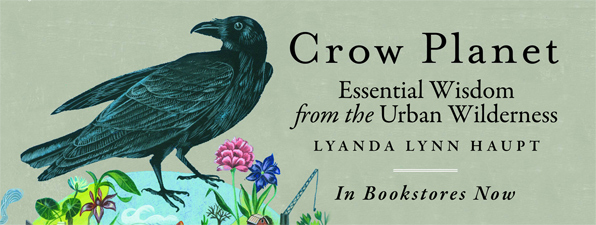
I am reading Lyanda Lynn Haugpt’s Crow Planet, a book about closely observing city crows that offer many insights on urban wildness. Haugpt is part of an urban ecology movement that I identify with. If city dwelling is a given for us– as it is for more than half the world’s population–how can we explore and expand our knowledge of nature from inside the city? I suspect that city birdwatching, like city gardening, connects us both with nature and with each other.
I also enjoyed Marie Winn’s Central Park in the Dark, which explores bird life in New York’s incomparable Central Park. Haughpt’s work goes a step further, by suggesting that we start at our kitchen table, looking out the window with binoculars, and exploring nature on our roofs, outside our doors, and in our immediate vicinity.
I like that Haughpt, a serious birder and wildlife researcher, has chosen the most humble of city birds, and made their stories integral to how we are now changing our views of city life and the relationship between humans and nature. I like her focus on the close observations of the everyday, and admire her narrative power to evoke history, myth, and natural science while reconsidering what city life is and can be.
I am already feeling sad to be close to the end of this inspiring book. Although Tokyo Green Space focuses more on city plants than animals, habitat rather than wildlife, I feel a kinship in her reinterpretation of the familiar and ordinary.
This is one of the blessings of the urban nature project: without the overtly magnficient to stop us in our tracks, we must seek out the more subversively magnificent. Our sense of what constitutes wildness is expanded, and our sense of wonder along with it. (pp 157-8)
Has anyone else read this book? I highly recommend it.